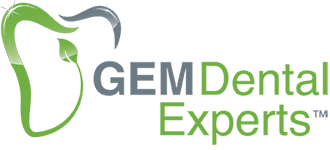
June 23, 2023
by Gabriele Maycher, CEO, GEM Dental Experts Inc. BSc, PID, dip DH, RDH
This issue marks the end of our regular “Stay Sharp” feature but look for more Q&As from Gabriele Maycher in coming issues on such topics as workplace conflict, client compliance, insurance snafus, and much more. Email your questions to tanya@newcom.ca with Q&A in the subject line.
Q: What is the rationale for a three-month vs. four-month recare maintenance interval?
A: There is scientific evidence to suggest that the plaque biofilm can cause significant periodontal destruction at various stages of maturation. It is also important to emphasize that periodontal destruction is not solely dependent on the exact maturation timeline but that the rate and extent can vary depending on several other factors like oral self-care, host response, and risk factors. But for the sake of this question, let’s focus on biofilm accumulation and maturation.
Periodontitis is an unpredictable and erratic disease. And once a client has periodontitis, it is never cured, it can only be managed with frequent recare maintenance. Success in treating clients with periodontitis is keeping them in long periods of “stability” or “remission and control.” We accomplish this by ensuring they are in the parameters of health, which is defined in the literature as ≤4mm pocket depths (PD), <10% bleeding on probing (BOP), and no 4mm PD, BOP. Therefore, it’s vital to keep their biofilms at bay so no further destruction can occur.
A study published in the Journal of Clinical Periodontology (June 2006) examined the relationship between plaque accumulation and periodontal destruction and found that at the three-month mark, plaque accumulation was associated with significant increase in inflammation and tissue destruction. So, the three-month maintenance interval for your clients becomes a critical period in the disruption of plaque accumulation and its destructive effects on the periodontium.
The literature doesn’t speak on the rationale for a four-month maintenance interval, but in my experience, this timeline is predominately driven by insurance support. For example, the client only has enough units of scaling for three visits per year vs. four visits. This isn’t “best practise” and will not sustain the parameters of health for long periods of time. Of course, the client does have the choice to choose a four-month interval if he or she has been given the rationale and understands the consequences of not accepting a three-month interval. This is called informed refusal, and this scenario should not be the norm.
Best practise dictates that any gingivitis client with bleeding on probing ≥ 10% going through nonsurgical periodontal therapy to achieve the parameters of health, which is ≤3mm PD, <10% BOP should be on a three-month maintenance interval until they are successful in sustaining the parameters of health for a minimum of one year. As for the four-month maintenance interval, there is a place for that in your practice. Client preference may lead some – particularly those who have a lot of stain – to come in more frequently.
Periodontal disease is present in 95% of the population, making it the most widespread disease in adults and a significant public health concern. Research shows that 47% of adults between the age of 30 and 65 years old and up to 70% for older adults have periodontitis.1 That represents a huge percentage of your clientele. To put this into perspective, more than 50% of your clients should be on a three-month maintenance interval at any given time. Gingivitis clients require a 3-month interval at the parameters of health for a minimum of one year, and periodontitis clients require this interval for life. Once a periodontitis client, always a periodontitis client.
Reference:
-
- Lang NP, Bartold PM. Periodontal health. J Periodontol. 2018;89(Suppl 1): S9–S16. https://doi.org/10.1002/JPER.16-0517






Leave a Reply
You must be logged in to post a comment.